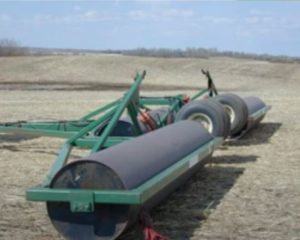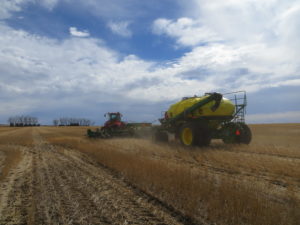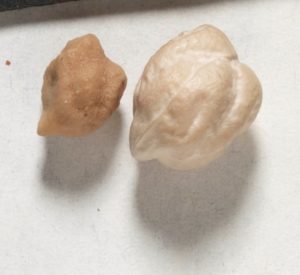Chickpea – Seeding
Chickpeas fit well into a direct seeding crop system under both minimum and no-till soil management. For best results, follow the recommendations in this section on selecting a site, seeding management, residue management, inoculation and fertilization. For control of weeds, please seed Weed Control.

Site Selection |
|
Choose |
|
Avoid |
|
Maintain good records |
|
CHICKPEA SEEDING RECOMMENDATIONS
|
|
SEED |
|
SEEDING DATES |
|
SEEDING DEPTH |
|
SEEDING RATE CALCULATOR |
|
SEEDING RATE |
|
SEEDS PER POUND |
|
SOIL TEMPERATURE |
|
Other Considerations |
|
TYPE OF EQUIPMENT |
|
LAND ROLLING |

|
GROWTH STAGES |
|
CHICKPEA – Seed Quality Testing and EvaluationIt is important to have seed tested by an accredited seed-testing laboratory for germination, purity, and seed-borne disease.
|
|
GERMINATION TESTING |
|
VIGOUR TESTING |
|
variables impacting seed quality |
|
combined testing |
|
Evaluation |
|
TESTING for seed borne diseases |
|
GUIDELINES FOR TOLERANCES OF SEED-BORNE DISEASES IN CHICKPEA PLANTED SEED(These are guidelines only and should be considered along with farming practices and level of disease risk for the situation) |
|
DISEASE (PATHOGEN) |
Tolerance and Factors Affecting the Level |
Ascochyta
|
|
Seed Rots and Damping-off |
|
Seed Rots and Seedling Blights |
|
NOTE |
|
CHICKPEA SEED TREATMENT RECOMMENDATIONS |
|
GENERAL |
|
ZONES |
|
SEED TYPE |
|
SEED TREATMENTS FOR INSECT PESTS |
|
Residue Management |
|
FALL PRIOR |
|
Direct Seeding Considerations |
|
ROTATIONAL PLANNING |
|
Related Links
- Agriculture Labs for Seed, Soil, Plant and Disease Testing
- Chickpea Staging Guides
- Chickpea seeding tips
- Seeding Tips for Pulse Crops
- Seed Quality is Important
- Spring Frost Damage to Pulses
Links
Special thanks to Saskatchewan Pulse Growers.


